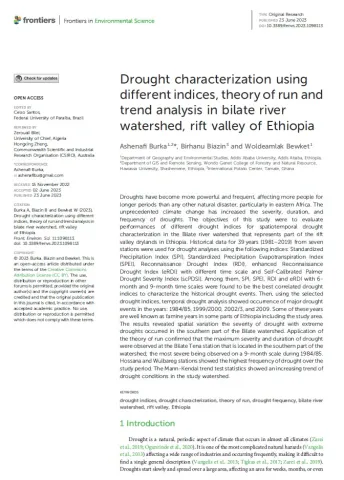Drought characterization using different indices, theory of run and trend analysis in bilate river watershed, rift valley of Ethiopia

Abstract
Droughts have become more powerful and frequent, affecting more people for longer periods than any other natural disaster, particularly in eastern Africa. The unprecedented climate change has increased the severity, duration, and frequency of droughts. The objectives of this study were to evaluate performances of different drought indices for spatiotemporal drought characterization in the Bilate river watershed that represents part of the rift valley drylands in Ethiopia. Historical data for 39 years (1981–2019) from seven stations were used for drought analyses using the following indices: Standardized Precipitation Index (SPI), Standardized Precipitation Evapotranspiration Index (SPEI), Reconnaissance Drought Index (RDI), enhanced Reconnaissance Drought Index (eRDI) with different time scale and Self-Calibrated Palmer Drought Severity Index (scPDSI). Among them, SPI, SPEI, RDI and eRDI with 6-month and 9-month time scales were found to be the best correlated drought indices to characterize the historical drought events. Then, using the selected drought indices, temporal drought analysis showed occurrence of major drought events in the years: 1984/85, 1999/2000, 2002/3, and 2009. Some of these years are well known as famine years in some parts of Ethiopia including the study area. The results revealed spatial variation the severity of drought with extreme droughts occurred in the southern part of the Bilate watershed. Application of the theory of run confirmed that the maximum severity and duration of drought were observed at the Bilate Tena station that is located in the southern part of the watershed; the most severe being observed on a 9-month scale during 1984/85. Hossana and Wulbareg stations showed the highest frequency of drought over the study period. The Mann-Kendal trend test statistics showed an increasing trend of drought conditions in the study watershed.
